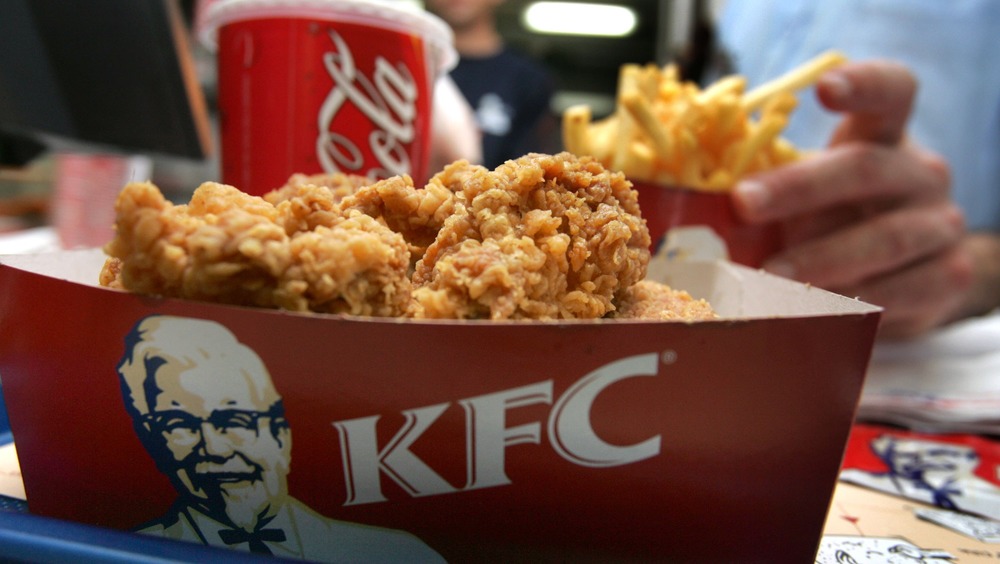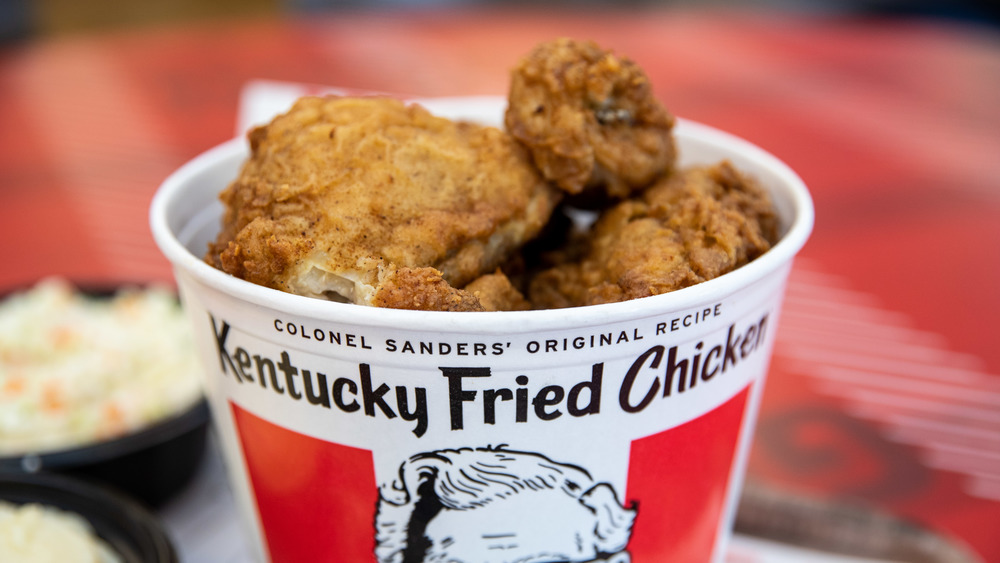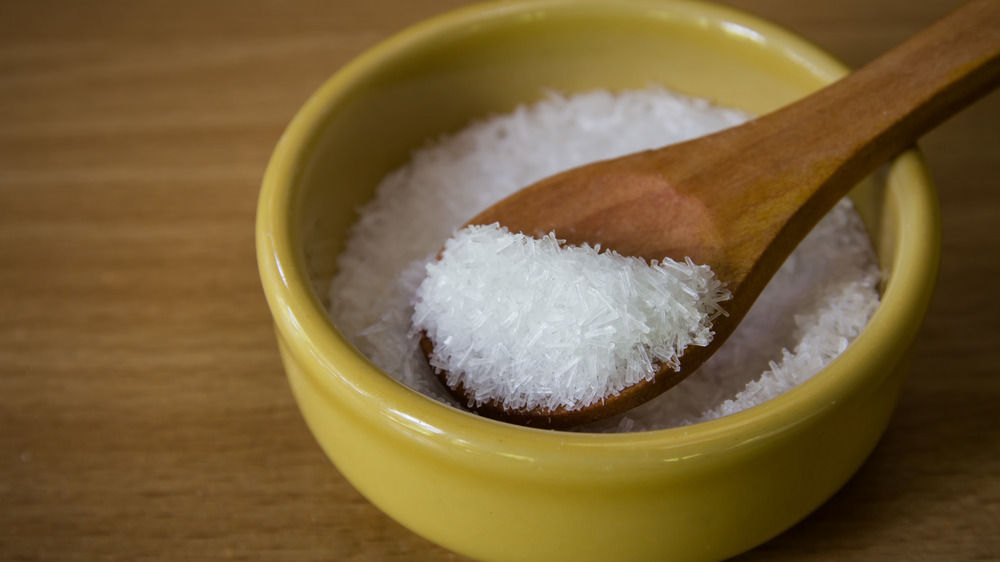This Is What Makes KFC's Fried Chicken So Crispy
KFC is so identified with its deliciously crispy Original Recipe fried chicken that since 1991, it hasn't felt the need to spell out its original, more-descriptive name, "Kentucky Fried Chicken" (via Southern Living). Everyone knows what "KFC" stands for, after all. What everyone does not know, not for certain, at least, is how KFC makes its fried chicken so delicious and crispy.
What we do know is that KFC's secret combination of 11 herbs and spices is such a valuable trade secret that the Yum! Brands company splits up the ingredients list into two parts, which it divides between two different suppliers (via the Chicago Tribune). If only we'd been alive and paying attention in the 1940s. Back then, the whole darn recipe used to be posted above the door of the first gas-station diner where Colonel Sanders first served his fried chicken.
We also know that KFC makes its fried chicken "the hard way," because, well, that's what its website says. Although KFC's website implies that it involves a mere three-step process (inspect, season, cook), we're just a tad too experienced in the ways of cooking to accept that as the whole story. Indeed, over the years, intrepid food journalists have made pilgrimages to KFC's Louisville headquarters in order to gain clarity. And they have. So here, without further ado, is how KFC makes their fried chicken so perfectly crispy.
What makes KFC's fried chicken so crispy requires a lot more than three steps
When Gizmodo took a tour of KFC's headquarters in Louisville, Kentucky, they noted at least 10 steps along the way to getting KFC's fried chicken so perfectly delicious and crispy: After inspection, the acceptable chicken parts are brined — in what, we don't know, but it could be pickle juice, among other options. Afterward, they're dried thoroughly before getting heavily dredged in that super-secret blend of 11 herbs and spices and then shaken around to remove any excess breading.
The breaded chicken parts are then placed on a rack in a very specific manner and arrangement. Only then are they lowered into a pressure fryer, a detail with an importance that cannot be overstated. After pressure-frying the breaded chicken parts for the prescribed time (which appears to be around 10 minutes, according to Gizmodo), the chicken is then "held" in an oven set to 175 degrees for about 20 minutes, a former employee told Reader's Digest, which "allows the chicken to finish cooking while keeping it warm and the skin crunchy" (which strikes as the fried poultry equivalent of letting your red meat rest).
And there you have it, you might think. But no. Something's still missing from the equation, something that takes KFC's fried chicken to the next level of delicious and crispy.
Even those 10 steps aren't really the whole story. Here's the rest.
Sure, pressure frying (which is, essentially, pressure cooking in oil, rather than water, which cooks the chicken extra-quickly) is an important factor in making KFC's fried chicken so crispy. But when the KFC-obsessed Chicago Tribune staff tried to recreate the Colonel's fried chicken using everything they'd learned in their obsessive quest to decode what makes said chicken as good as it is (no judgment, we totally get it), they couldn't quite get it right. That is, until one reporter grabbed a container of the MSG flavor-enhancer Accent and sprinkled it on the chicken.
And what do you know? That was the missing piece. MSG, or as it's formally known, monosodium glutamate, has since been confirmed as an ingredient in KFC's Original Recipe fried chicken (via KFC). But please don't let that keep you from enjoying KFC. Somewhere along the line, monosodium glutamate acquired an undeservedly bad reputation, when in fact, it's literally the key to the "umami" flavor everyone's been talking about in recent years, and which humans have been scientifically proven to crave (via Pratica Medicala).


